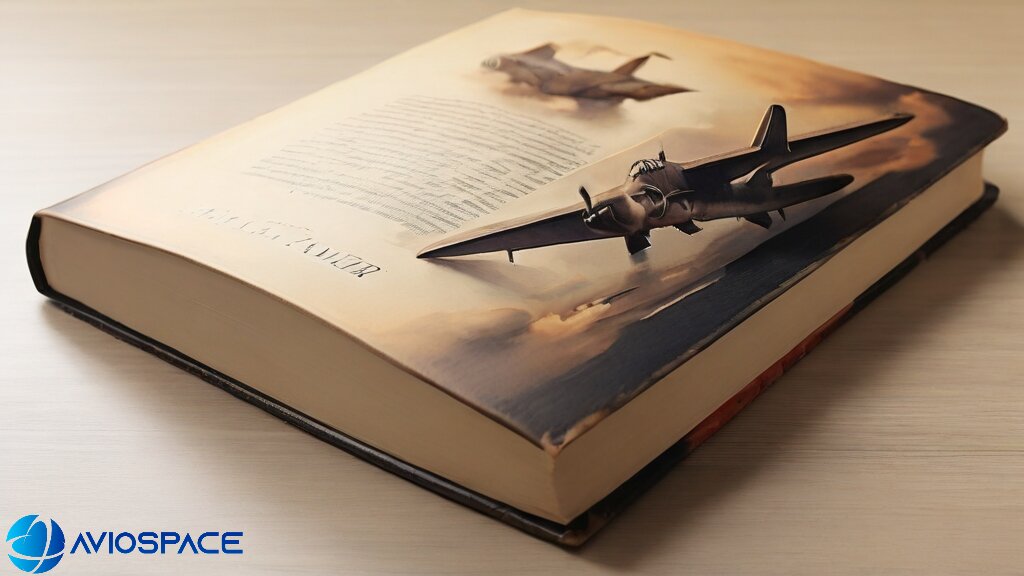
The word “Aviation” is cognate with “Aves”- the word with which we describe the animals that take to the skies. And it is this dream of taking to the skies, possibly beyond the horizon where a word like “sky” is rendered meaningless, is what captures the imagination of billions of people. And these creative, imaginative powers take off at a very young age, when a student might need to be involved with aviation-related literature. And that too in an educational project.
So there are books that one can, should, and, if you’re an aviation lover, must dare to read. In the wonderfully romantic book titled “The Fault in Our Stars”, the author wonders:
“Sometimes, you read a book and it fills you with this weird evangelical zeal…”
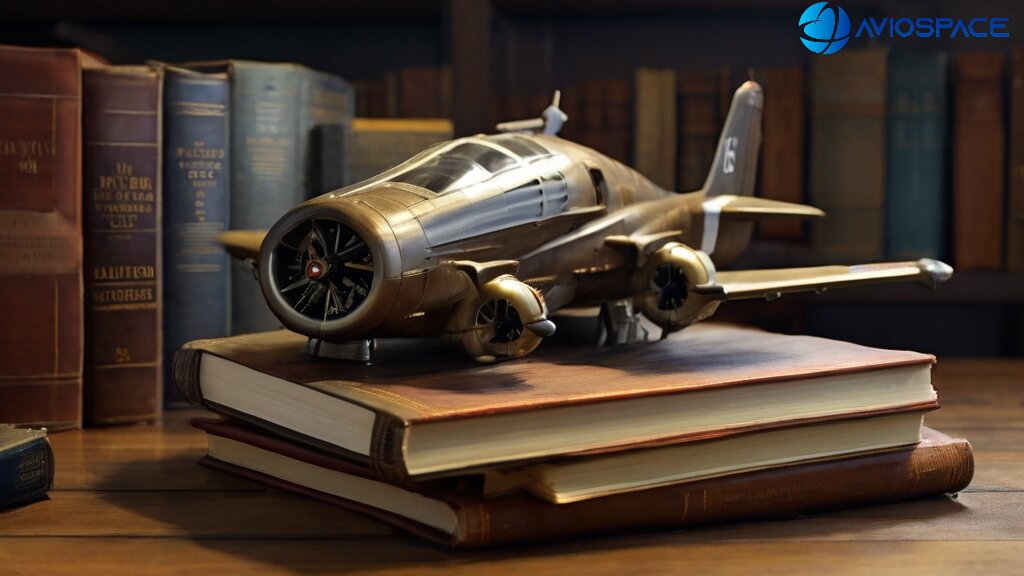
― Douglas Adams, “Life, the Universe and Everything”
So a book is a window into time, into the reality of different epochs. And since the aviation sector- which rose as the Wright Brothers took to flight, and then rose higher as rockets were launched, and still higher when humans look to space- has had so much transformation, there are plenty of aviation books that will come in handy during your educational project.
Let’s take a look at a few of them:
1. The Wright Brothers by David McCollough
“The Wright Brothers” is an iconic book in the field of aviation. This is about the courage, ingenuity, and sheer audacity of two brothers- Wilvur and Oliver- to make it to the skies. And when they flew, it was for 120 feet, in around 12 seconds.

Photo: Wright Brothers | Wikimedia Commons
And in a time when we have aircraft that are flying almost as high as 7 times the speed of sound, we might think it rather pedestrian to have taken the flight that the Wright brothers did. But their act of flight was what led to a revolutionizing transformation of humans from being pedestrians to automobiles to fliers. And all of the pilots and cabin crew and astronauts and aircraft manufacturers, maintainers-should owe a section of their passion to the Wright Brothers, who, despite setbacks after setbacks, pursued flight relentlessly.
” I don’t have any regrets about my part in the invention of the airplane, though no one could deplore more than I do the destruction it has caused. I feel about the airplane much the same as I do in regard to fire. That is, I regret all the terrible damage caused by fire, but I think it is good for the human race that someone discovered how to start fires and that we have learned how to put fire to thousands of important uses.”-
– Orville Wright reflecting on the destruction wreaked upon the human race by air-plane during the World War

― David McCullough, The Wright Brothers
Worthwhile Quotes in the Book to inspire you:
“What had transpired that day in 1903, in the stiff winds and cold of the Outer Banks in less than two hours time, was one of the turning points in history, the beginning of change for the world far greater than any of those present could possibly have imagined. With their homemade machine, Wilbur and Orville Wright had shown without a doubt that man could fly and if the world did not yet know it, they did. Their flights that morning were the first ever in which a piloted machine took off under its own power into the air in full flight, sailed forward with no loss of speed, and landed at a point as high as that from which it started.”
“It wasn’t luck that made them fly; it was hard work and common sense; they put their whole heart and soul and all their energy into an idea and they had the faith.”

― The Wright Brothers
What Aviation lovers say about the book?
The book got a lot of rave reviews. The daughter of the famed aviator Charles Lindburg wrote in the New York Times that the book: “shows as never before how two Ohio boys from a remarkable family taught the world to fly”
A review of the book in San Francisco Chronicle echoed the second quote (from the book) that we have chosen above: “Fighting the persistent myth of invention’s “aha” moment, McCullough shows the importance of experiment, error and inspiration in nature. “
Rounding Up about the book
And sometimes, we think that geniuses are “born” but not “made”, the book makes us rethink the second of these quotes. Persistence, a willingness to not give up, and improvising on ideas were the key to Wright Brothers’ flight. We wouldn’t want to put the achievement of the Wright Brothers in a mantra like the above. Read the whole of this brilliant book” The Wright Brothers” by David McCollough for more fulfilling details.
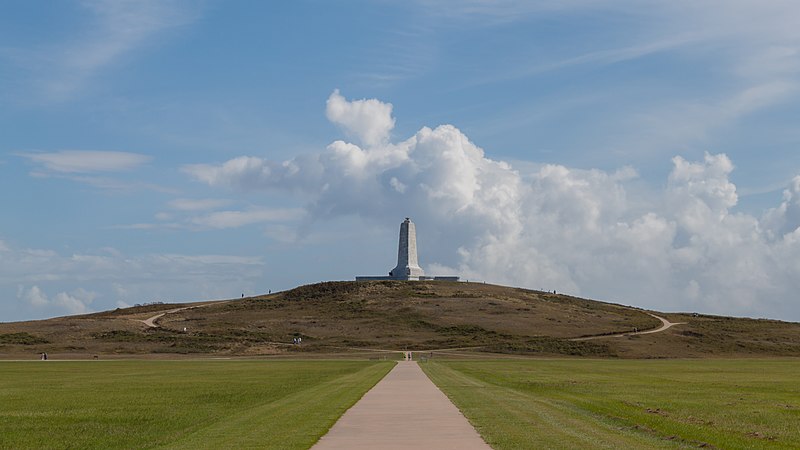
Photo: Kip Robinson | Wikimedia Commons
2. Pale Blue Dot by Carl Sagan
Carl Sagan was a genius- a genius at conveying science to the General Public. A remarkable example of this was when he pondered about the picture that Voyager, the farthest-traveling telescope ever made, turned towards the Earth at his behest and took a picture. One can barely determine where the Earth is, let alone identify it precisely.
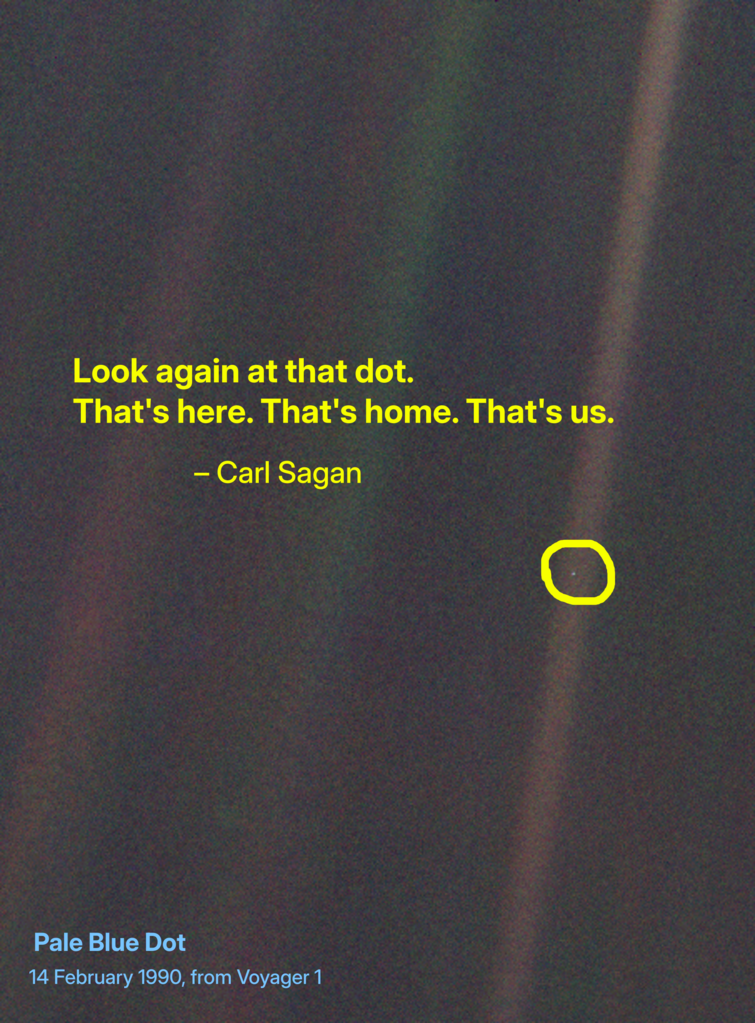
Carl Sagan, after pondering about the implications of the picture, wrote rather imperishably:
“Look again at that dot. That’s here. That’s home. That’s us. On it everyone you love, everyone you know, everyone you ever heard of, every human being who ever was, lived out their lives. The aggregate of our joy and suffering, thousands of confident religions, ideologies, and economic doctrines, every hunter and forager, every hero and coward, every creator and destroyer of civilization, every king and peasant, every young couple in love, every mother and father, hopeful child, inventor and explorer, every teacher of morals, every corrupt politician, every “superstar,” every “supreme leader,” every saint and sinner in the history of our species lived there-on a mote of dust suspended in a sunbeam.”
Carl Sagan has written a lot of books- especially about the Cosmos and Space Science- urging humans to fly further than we’ve dared- perhaps even imagined. He thinks that the human species won’t be limited to the limits of skies that aviation laws or boundaries have given us. We’ll wander into other Solar Systems, other Galaxies. But with time. With patience. And like the Wright Brothers- with endurance and the willingness to push our creative boundaries.
What aviation lovers said about the book?
A reviewer rather emotionally wrote in a blog that: “The joy of reading Sagan’s work, and any other work of astronomy for that matter, is realizing egalitarianism is echoed by the stars.”
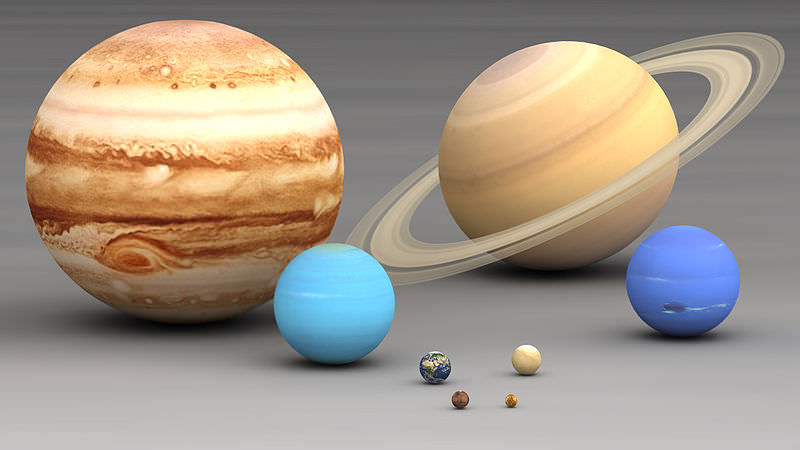
Quotes in the Book that touches the heart
“A blade of grass is commonplace on Earth; it would be a miracle on Mars. Our descendants on Mars will know the value of a patch of green. And if a blade of grass is priceless, what is the value of a human being?”
“Our planet is a lonely speck in the great enveloping cosmic dark. In our obscurity, in all this vastness, there is no hint that help will come from elsewhere to save us from ourselves.”
Rounding Up About the Book
It is a must-read. If you’re someone who’d like to get more than an aerial perspective on human life, this is the place to go.
3. Aviation Disasters: The World’s Major Civil Airliner Crashes since 1950 by David Gero
Let this title not fool you- the book is not a scaremongerer. It is just a review of what caused major aviation accidents. The number of aircraft accidents has gone down throughout the centuries. When the supposed first crash occurred, the general rule of “taking to the right” occurred in the aviation community. When mid-air collisions still persisted, TCAS systems were installed.

Photo: NTSB | Wikimedia Commons
Every crash is a stepping stone to get better. And this book is a testimony to that. It covers why the accidents (discussed in the book) took place, how the investigation moved forward, and what plans were later implemented to make the skies safer.
Rounding Up About the Book
The book has taken impeccable research to come up with. It was an immediate bestseller at the time it came out. One might as well argue that this is a Bible for Aircraft investigators. Though it doesn’t quite give you the details of each crash, it provides some context, what happened, and how the aviation community inches forward, One crash at a time. If you’re concerned about how, why, and where crashes have taken place throughout history, you should look no further than this. It is a book for ages.
4. Fly Girls: How Five Daring Women Defied All Odds and Made Aviation History
One of the five women about whom the book is written is reported in the book to have said: “If you will tell me why, or how, people fall in love, I will tell you why, or how, I happened to take up aviation. – louise thaden, Pittsburgh Post-Gazette,”. This book is about the triumph of women who cut across the stereotypes in the 1930s about how women wouldn’t be suited to fly.

It is delightful for any female who aspires to take to the skies. Any female in general, who might have felt the bitter pangs of discriminatory attitudes at their workplace, or any person in general, can learn a lot from this book. Especially if your aviation educational project asks you to dig into the lives of pioneering aviators, this is a go-to book.
Notable Quotes in the Book
“She would be, she said, in the rustling of the leaves on the trees and the lazy drift of the clouds across the sky. She would be in the whispers of the wind, in the great blue horizon, and in the falling rain. “The hues of sunset will be a part of me,” Thaden said, “and the smell of flowers in the air. Contrails cut across God’s heavens will be the paths along which I walk—the drifting snowflakes, my caress—the morning sun, my confidence.
” All her children had to do, she said, was close their eyes, and they would find her. They would feel her presence in the air.”
“Others found jobs but got paid far less than men—a fact not lost on cash-strapped employers. It was, one employer said, the only real reason to hire women: “They produce more and demand less.”
5. Cosmos By Carl Sagan
“The Cosmos is all that is or was or ever will be.”. With this ravishing quote begins this most magical book that has for generations been transformed into a wonderful TV series. It is a book that gives you reflections on fantastic reflections on books: “Books permit us to voyage through time, to tap the wisdom of our ancestors…..Books break the shackles of time, proof that humans can work magic.”
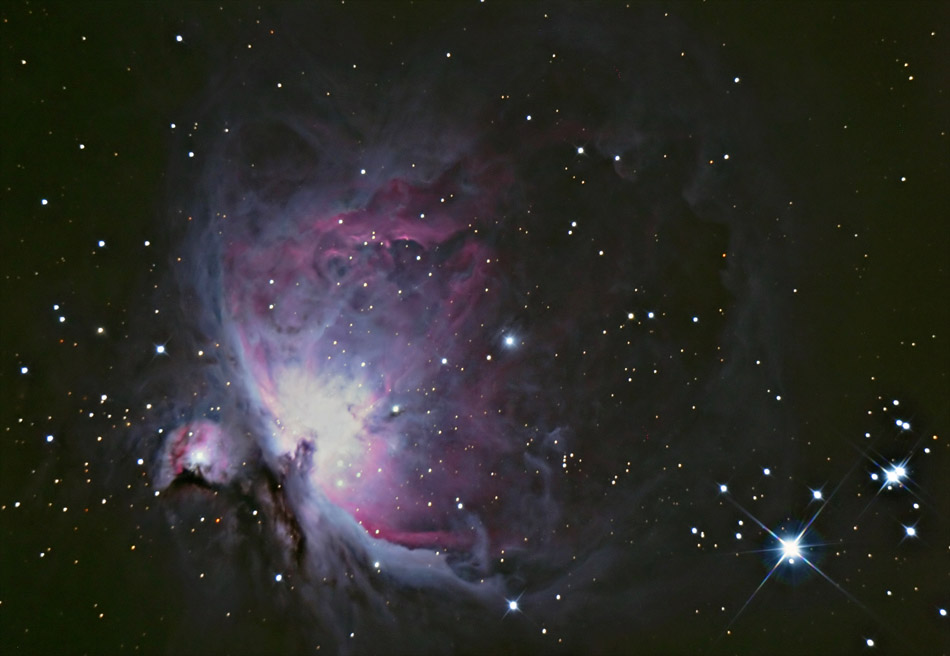
Photo: Rochus Hess | Wikimedia Commons
What did Aviation/ education lovers say about the book?
An excerpt in a book review sums it all up:
“there is not a book….on science – that comes close to the eloquence and intellectual sweep of Cosmos… If we send just one book to grace the libraries of distant worlds…, let it be Cosmos.”

Photo: oliwok | Wikimedia Commons
Notable Quotes in the Book
“The nitrogen in our DNA, the calcium in our teeth, the iron in our blood, the carbon in our apple pies were made in the interiors of collapsing stars. We are made of starstuff.”
“If you wish to make an apple pie from scratch, you must first invent the universe.”
“There’s as many atoms in a single molecule of your DNA as there are stars in the typical galaxy. We are, each of us, a little universe.”
Rounding Up About the book
It is “unputdownable”.
All in all
We hope that these books make you feel delighted not simply at reading but at discovering the hidden pearls of wisdom encoded into these books. These will help you gain some perspective into the world of flying. And like flying itself, it helps cut across regional boundaries so that you become international. Best of luck with your educational project.
